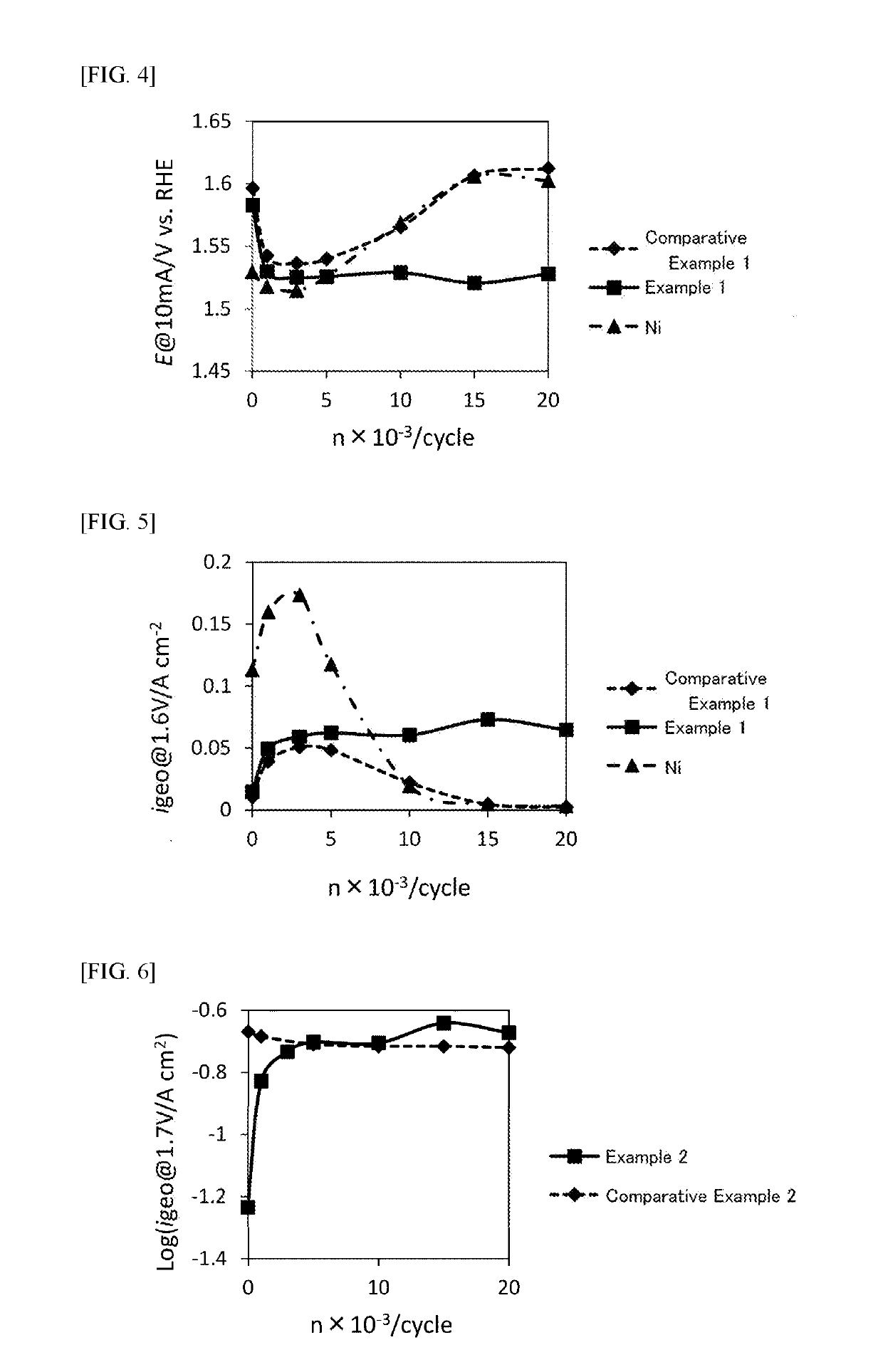Method for producing anode for alkaline water electrolysis, and anode for alkaline water electrolysis
- Summary
- Abstract
- Description
- Claims
- Application Information
AI Technical Summary
Benefits of technology
Problems solved by technology
Method used
Image
Examples
example 1
[0069]Lithium nitrate (manufactured by Wako Pure Chemical Industries, Ltd., purity: 99%) and nickel acetate tetrahydrate (Ni(CH3COO)2.4H2O, manufactured by Junsei Chemical Co., Ltd., purity: 98.0%) were added to pure water and dissolved to form a precursor. The molar ratio between lithium and nickel in the aqueous solution was set to Li:Ni=0.1:1.9. The concentration of nickel acetate in the aqueous solution was set to 0.3 mol / L.
[0070]For the anode substrate, a nickel plate (surface area: 1.0 cm2) that had been subjected to a chemical etching treatment by immersion for 6 minutes in a solution of 17.5% by mass hydrochloric acid at a temperature close to the boiling point was used. The aqueous solution described above was applied to the anode substrate using a brush, and was then dried under conditions of 80° C. for 15 minutes. Subsequently, a heat treatment (pretreatment) was performed in the open atmosphere under conditions of 550° C. for 15 minutes. After repeating the process from ...
example 2
[0095]Using a similar process to Example 1, a catalyst layer was formed on a nickel plate (surface area: 1.0 cm2), thus producing an anode of Example 2.
example 3
[0100]Lithium nitrate (manufactured by Wako Pure Chemical Industries, Ltd., purity: 99%) and nickel acetate tetrahydrate (Ni(CH3COO)2.4H2O, manufactured by Junsei Chemical Co., Ltd., purity: 98.0%) were added to pure water and dissolved to form a precursor. The molar ratio between lithium and nickel in the aqueous solution was set to Li:Ni=0.1:1.9. The concentration of nickel acetate in the aqueous solution was set to 0.56 mol / L.
[0101]For the anode substrate, a nickel expanded mesh (10 cm×10 cm, LW×3.7SW×0.9ST×0.8T) that had been subjected to a chemical etching treatment by immersion for 6 minutes in a solution of 17.5% by mass hydrochloric acid at a temperature close to the boiling point was used. The aqueous solution described above was applied to the anode substrate using a brush, and was then dried under conditions of 60° C. for 10 minutes. Subsequently, a heat treatment was performed in the open atmosphere under conditions of 500° C. for 15 minutes. The process from application...
PUM
| Property | Measurement | Unit |
|---|---|---|
| Temperature | aaaaa | aaaaa |
| Temperature | aaaaa | aaaaa |
| Density | aaaaa | aaaaa |
Abstract
Description
Claims
Application Information
 Login to View More
Login to View More - R&D
- Intellectual Property
- Life Sciences
- Materials
- Tech Scout
- Unparalleled Data Quality
- Higher Quality Content
- 60% Fewer Hallucinations
Browse by: Latest US Patents, China's latest patents, Technical Efficacy Thesaurus, Application Domain, Technology Topic, Popular Technical Reports.
© 2025 PatSnap. All rights reserved.Legal|Privacy policy|Modern Slavery Act Transparency Statement|Sitemap|About US| Contact US: help@patsnap.com



